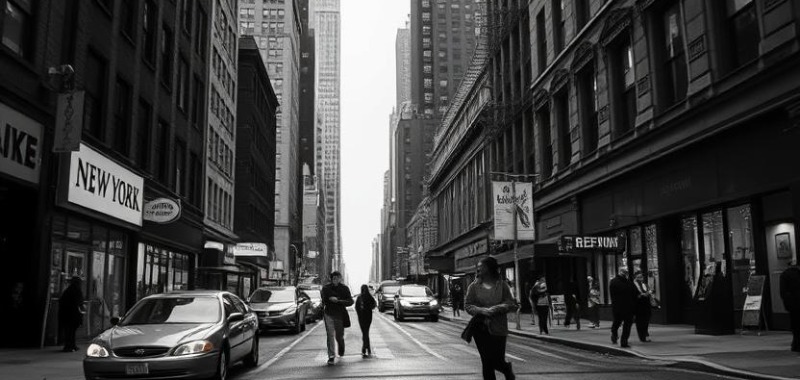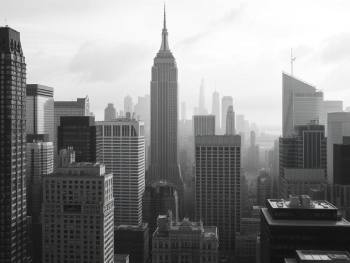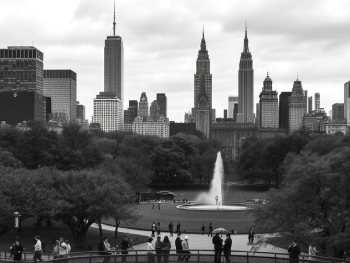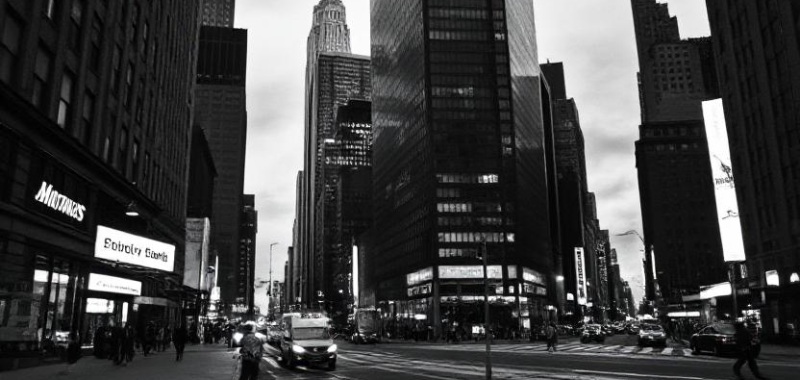
New York City thrives on contrasts, its towering skyscrapers, bustling streets, and diverse communities create an ever-changing landscape. Stripped of color, the city reveals a raw, gritty dimension, told through high-contrast black-and-white images. "New York in Black & White" captures this essence, from Manhattan's vibrant streets to the overlooked corners of Brooklyn. The absence of color shifts focus to the interplay of light and shadow, inviting viewers to experience the city's dynamic spirit in its most powerful, stripped-down form.
Power of Black and White in Street Photography
The style of street photography has long been based on light, shadows, and the interaction of humanity. When one pulls out the colors, however, a much deeper aspect unfolds. Texture, tone, and contrasts are enhanced with black and white to weave into the very essence of the stories each image tells.
In New York, a city moving at an electric pace, black-and-white photography allows us to stop and pay attention to the ephemeral moments that define urban life; may it be pedestrians caught in crosswalks, the angry lines of a subway station, or the stark contrast of a street vendor all alone under the unforgiving midday sun. Black and white resonate with the rhythm while color somehow misses the beat of daily life.
Black & White Famous Spots
Even New York's most famous spots in black-and-white still gain more dimensions. With color gone, the city's familiar landmarks and its hidden corners seem stricken between the glaring glare of reality and yawning intimacy.

Manhattan's High-Energy Streets
Speaking of New York City, one thinks Manhattan-city core. Times Square is perhaps the most recognizable place with blinking lights overwhelmed with human cacophony. A black-and-white photo does not give you the vibrant colors; instead, it gives a moody and intimate atmosphere with heavy contrasts. The neon lights now serve merely as stark contrast to the pitch-black streets and the windows of the tall skyscrapers.
The noise of Fifth Avenue or quiet corners in the Financial District come alive in peculiar ways unnoticeable with the color photographs. The glistening surface of a high-end store against the worn-out shoes of a passerby, or the long shadows of a skyscraper stretching across to a dormant café; these scenes tell the story of the city's contrasts far better than mere color.

Timeless Central Park
While New York is often seen as an urban jungle, Central Park provides the welcome reprieve from the frantic pace of city life. In black and white, the park assumes a calm, almost eerie ambience. The naked branches of the trees seem to stretch across the heavens whilst the benches and pathways evoke a feeling of loneliness amidst the skyline of a big city.
Here, the light assumes paramount importance. Crisp mornings-wrapped in fog-blanket the park; devoid of colors, the silvers of white and blacks stretch an emotional hand conveying a deep sense of calm and inward reflections. This depicts a New York seldom spoken about: those quiet, contemplative spaces that exist within.
Capturing Souls of the City
New Yorkers breathe the life of the city, and there are very few things that can chauvinistically hold the spotlight when it comes to urban photography except maybe the architecture or landscapes. It must be something about the human element that just defines a city. The black-and-white medium removes all distractions with emotions on each individual's face.
Street Vendors and Subway Riders
Street vendors, hurried commuters, and performers on the sidewalks create a varied heartbeat of the city. A black-and-white portrait of the street vendor as he, with his shadowed silhouette on a shadowed cart behind her against the skyline, or indeed the faint, tired, hopeful face of a subway rider obscured by harsh fluorescent lights throws a story over the moment.
It has been the photographer who, with the contrasts and starkness of monochrome, has etched the raw human experiences that remain obscure to hurried glances during everyday grind. The faces showcased are equally marked by wear and emotion but extend beyond mere mortals to shed light onto the unbreakable spirit of those who proudly call this city their home.
Street Scenes and Candid Moments
The monolithic black-and-white photography is able to trap all those candid moments that hit right in the emotion. Observe those people walking fast across busy streets, lost in thought, while their very faces were being highlighted by the absence of color. Such scenes do not require explanation; their rawness speaks louder.
Photographers can now emphasize the subtleties, the quiet moments of connection, the fleeting smile, or an exchange of glances between strangers, which color might have drowned out. Conversely, the monochrome also dramatizes contrasts, such as the harsh lighting of a streetlamp on a forlorn figure or the passing shadow of a taxi that races across the crosswalk.

A Visual Language Beyond Color
In "New York in Black & White," the city is seen through contrasts and textures. These stark, high-contrast images think of something new for the viewer to look at the city. They turn commonplace scenes into dramatic visual statements. The Acts of not having color in the image do not even cause a constraint, and rather they bring in an invitation to get deeply involved with the narration, feel the emotions that a moment might stir, and get into the trance that the city is offering, which gets often skipped in the hustle and bustle of everyday life.
In the final analysis, these black-and-white images do tell the feature of New York City in search less of its iconic landmarks or the celebrity treatment, all in capturing the spirit of the city: never-ending movement, beauty in the commonplace, and an expression of the feelings hidden down all of the city streets. It allows us, fairly through the lens, to appreciate that the spirit of New York lies not in its colors but in its contrasts, colors, lights and shadows, highs and lows, constant metamorphosis, and timeless charm.
Stripped of Color, Full of Life - New York in Black & White
More than a book of images, "New York in Black & White" is a meditation on the city's soul. Through black-and-white photography, contrasts of New York from towering skyscrapers to the anonymous faces of the crowd are shown in starker image. A gentle reminder that there is splendor in simplicity and power in moments that remain unnoticed. In black and white, New York is beyond a city-it is an artwork.
